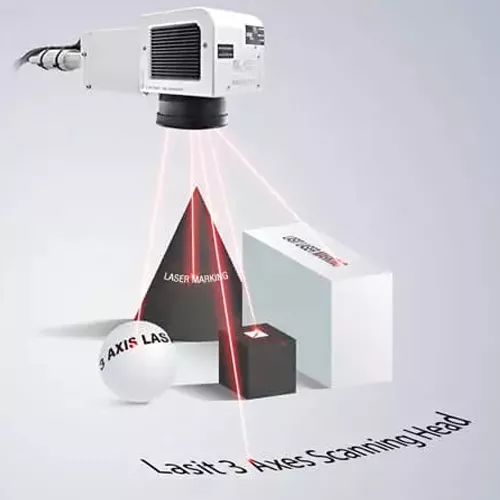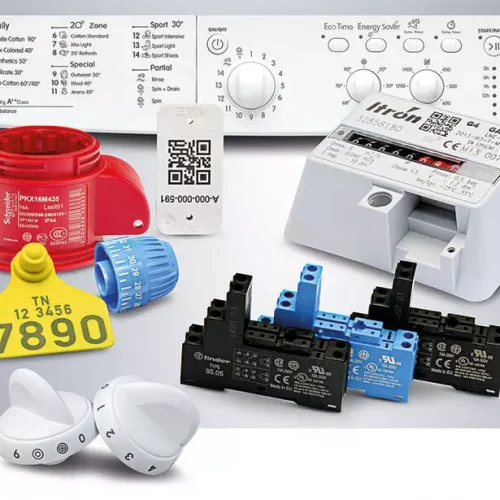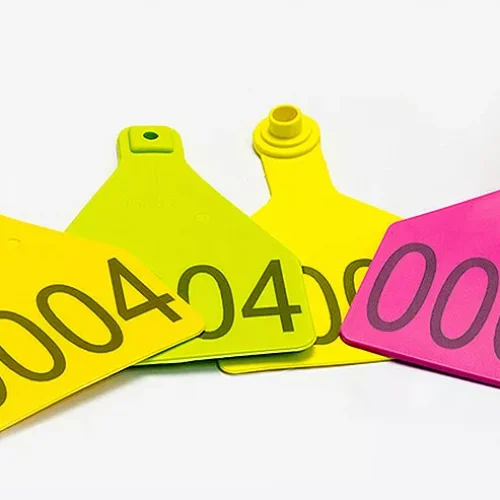Advanced and latest generation technologies for laser engraving and marking on plastic materials



Plastic marking is the process of placing a mark or label on a plastic surface to identify the material, provide information, or convey a message.
There are several ways to mark plastic, depending on the type of plastic and the desired result.
One of the techniques commonly used to mark plastic is hot stamping, which involves using a printer to heat a metal die to print the mark or label onto the surface of the plastic.
Other common techniques include laser marking, which uses a laser beam to etch the mark or label into the surface of the plastic, and chemical marking, which uses a chemical solution to create a chemical reaction that produces the mark or label on the surface of the plastic.
The choice of marking method depends on the specific needs of the project and the characteristics of the plastic, such as thickness, type of plastic and expected conditions of use. It is important to make a careful evaluation of the options available to choose the most appropriate marking method for your project
Yes, it is possible to engrave plastic using a variety of techniques, such as laser marking or mechanical engraving.
Laser marking is a popular method of etching plastic, which involves using a high-intensity laser beam to remove material from the surface of the plastic. The laser is focused on the surface of the plastic, creating a spark that vaporizes the material and leaves an etched mark on the surface. Laser marking is precise and capable of producing high-quality marks, but can be expensive and require the use of specialized equipment.
Mechanical etching is another option for etching plastic, which involves using a mechanical tool, such as a bur or diamond bit, to remove material from the surface of the plastic. Mechanical engraving can be used to create deep or light marks and can be done with mass production equipment or hand tools. However, mechanical engraving can be less precise than laser marking and may require a greater amount of time and effort.
As with any etching technique, it is important to follow the manufacturer’s instructions and use the necessary equipment and protective gear to ensure safety during the process.
Laser marking on plastic, a rapidly evolving field of technology, stands out for its ability to make permanent, precise, high-quality markings on a wide range of plastic materials. This process uses different techniques, each with unique characteristics and suitable for specific types of plastic.
Laser Engraving: This technique removes material from the surface of the plastic using the laser beam, which melts and vaporizes it. It is ideal for creating deep, distinct marks on various types of plastic.
Laser Etching: Much like engraving, laser etching creates shallower marks by heating and melting the surface of the plastic. This method is particularly suitable for thinner materials that require shallower markings.
Laser Annealing: Used primarily on plastics such as steel, titanium and stainless steel, this technique does not remove material but causes a chemical change beneath the surface, creating colored markings.
Laser Ablation: This method selectively removes thin layers from the surface of a material, and is useful for removing paint or thin films.
Foaming: In this process, the laser selectively melts the matrix material, creating gas bubbles that become trapped during cooling. The resulting markings are raised and appear bright on dark plastic.
Color Change: Including discoloration, bleaching and carbonization. This method uses laser beam energy to change or degrade the structure of specific molecules, such as color pigments.
Choice of Laser: The choice of laser type depends on the plastic material and the specific application. Fiber lasers are efficient and precise, ideal for engraving stronger plastics and obtaining high-contrast markings. CO2 lasers are versatile and suitable for engraving softer plastics.
Plastic Materials: Different types of plastic react differently to laser marking. For example, polypropylene (PP) and polyethylene terephthalate (PET) respond well to laser marking, especially when treated with a fiber laser. PVC requires caution due to the potential release of toxic fumes, while nylon (PA) produces clear, long-lasting markings.
Marking Depth: The depth of laser marking on plastic depends on the laser power, speed and type of plastic. It is essential to optimize these parameters to achieve the desired marking depth without damaging the integrity of the plastic part.
Quality and Accuracy: Ensuring that marking meets high standards of quality and accuracy is essential. Choosing a reliable laser marking service with experience in dealing with different types of plastic is crucial to achieving optimal results.

+39 800 821 577
sales@lasitlaser.com
Location
ITALY | Via Solferino 4, 80058
Torre Annunziata (NA) - Italy
POLAND | Ul. Fabryczna 34, 43-100
Tychy, Poland
SPAIN |
Calle Bari 55, 50197
Plataforma Logística Zaragoza
GERMANIA |
Im Stockäcker 7, 78194
Immendingen
REGNO UNITO |
Unit 6 Blythe Valley Innovation Centre
Central Boulevard
© 2024 LASIT Sistemi e Tecnologie Elettrottiche S.p.A. | P.Iva 02747991210 | C.F 01803670643 | Chi Siamo | Contattaci Privacy Policy.